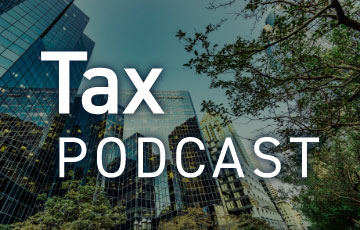Captive insurance is a unique financial tool businesses can use to help protect themselves from risks. However, the IRS has recently issued final regulations on the taxation of micro-captives. Read on to learn more about how this tax treatment works, the historic background and recent rulings.
What Is a Micro-Captive?
A traditional 831(a) captive is an insurance company that is owned and managed by the individuals or entities it insures. It can be owned by either a single entity or a collective group. Its purpose is to cover insurable losses incurred by its owners. This type of insurance arrangement is taxed at regular corporate rates.
Like a captive, a micro-captive — also called an 831(b) captive — is an insurance entity owned by the people or entities it insures. However, its owners have chosen to be taxed solely on the investment income generated, rather than on the captive’s underwriting profits. To be eligible for this form of taxation, micro-captives must not receive premium payments exceeding a designated limit for the tax year in question.
Overview of IRS Final Regulations on Micro-Captive Insurance
On January 10, 2025, the Internal Revenue Services (IRS) issued final regulations, T.D. 10029, that impact Section 831(b) captive insurance companies (micro-captives), company owners, insured customers and related parties.
Prop. Reg. Section 1.6011-10 Micro-captive listed transaction regulation defines the criteria that characterize certain micro-captive transactions as either listed transactions or transactions of interest. These designations are types of reportable transactions that require extensive additional tax return disclosure by all the involved parties.
Background: IRS Concerns With Section 831(b) Micro-Captives
The IRS has long been concerned that some taxpayers have used Section 831(b) micro-captives to avoid or evade federal income taxes. In the common fact pattern, the owners of an operating business that generates significant taxable income, usually working with a third-party captive sponsor or manager, separately create and own a captive insurance company.
The captive insurance company is classified as a C corporation for U.S. federal income tax purposes. The operating business receives a tax benefit by taking an ordinary deduction for premiums paid to the captive insurance company. Meanwhile, the captive insurance company makes a Section 831(b) election to be taxed only on its investment income and thereby exclude the company’s insurance underwriting income from corporate income tax.
Qualifying as a Micro-Captive
To qualify to make a Section 831(b) election, various requirements must be met. There is an annual limitation on net written premiums ($2.85M for 2025), as well as certain diversification and other requirements. Note a captive insurance company is not required to make a Section 831(b) election. If no election is made, the underwriting profits of the captive will be taxable under Section 831(a) and, in this case, these regulations do not apply to the captive.
The owners of the micro-captive pay no tax on the income of the micro-captive unless and until the profits are distributed by the micro-captive as dividends. The micro-captive transactions result in deferral of taxable income and a favorable tax rate arbitrage due to the lower tax rates that apply to qualified dividend income versus insurance premiums deducted under ordinary income tax rates.
Evading Federal Taxes
The IRS believes that in many cases, micro-captives making the Section 831(b) election are used in schemes that lack many of the attributes of legitimate insurance, including adequate risk shifting and risk distribution.
Micro-captive transactions may include implausible or low-frequency risks, failures to match genuine business needs, and, in many cases, are viewed as unnecessary duplications of the taxpayer’s commercial coverages. In addition, the premiums paid under these arrangements may be viewed as excessive by the IRS and may not reflect arm’s length pricing.
IRS Actions Against Abusive Micro-Captive Transactions
The IRS has been focused and active in this area over the last 15 years, evidenced by the following:
2011 and 2012
The IRS began serving subpoenas to more than a half-dozen captive managers, whom the IRS alleged were marketing captive strategies to their clients primarily as a tax shelter. The IRS used information obtained by subpoena to open promoter audits involving hundreds of individual Section 831(b) captives and their owners.
Most of these audits have now been settled, with the IRS typically disallowing the tax deduction for annual premiums paid to the captive. In many cases, the IRS also assessed substantial penalties and interest.
2014
The IRS began regularly including Section 831(b) captives on their IRS Dirty Dozen list of abusive tax avoidance schemes.
2016
The IRS issued Notice 2016-66 identifying certain 831(b) captives as transactions of interest necessitating increased disclosure. Notice 2016-66 defined a transaction of interests encompassing the following elements:
- An operating business purchases insurance from a captive, or the captive reinsures the risk through a third party.
- The captive has made a Section 831(b) election to be taxed solely on investment income.
- The owner of the insured entity owns, directly or indirectly, at least 20% of the voting power or the value of the captive.
- At least one of the following conditions applies:
- The liabilities of the captive incurred for insured losses and administrative costs are less than 70% of earned premiums, excluding any policyholder dividends paid by the captive during the five-year computation period.
- The captive has provided or agreed to provide financing to the insured or related parties, through guarantees, loans, or investments that are not treated as taxable income by the recipient.
Taxpayers use Form 8886 to make the required disclosure. Substantial penalties apply if the taxpayer is found to have participated in a micro-captive transaction and fails to make the required disclosure.
Tax return disclosure may not, on the surface, seem to have much impact beyond the administrative burden it creates. However, from the IRS perspective, it is very impactful because taxpayers who receive tax benefits from using Section 831(b) captives can no longer hide in the shadows. Before Notice 2016-66, it was difficult for the IRS to identify taxpayers who were participating in micro-captive transactions. This is clearly no longer the case. A copy of initial year Form 8886 is required to be filed with the IRS Office of Tax Shelter Analysis (OTSA).
2019
In IR-2019-157, the IRS offered a time-limited settlement for certain taxpayers under audit who participated in abusive micro-captive transactions. The following year, the IRS revealed that 80% of taxpayers eligible for the 2019 program accepted the settlement offer.
2020
The IRS in IR-2020-26 announced the formation of twelve new examinations teams and stated that it plans to open several thousand micro-captive examinations, presumably to audit taxpayers that participated in micro-captive insurance transactions, presumably to target the OTSA list of taxpayers gleaned from tax return disclosure.
In 2020, in IR-2020-226, the IRS notified taxpayers participating in micro-captive transactions to consult with an independent tax advisor to determine if the transaction is abusive. In IR-2020-241, a second time-limited settlement was offered for certain taxpayers under audit who had participated in abusive micro-captive transactions.
2021
In IR-2021-82, the IRS urged those involved with abusive micro-captives to exit those strategies as soon as possible and not claim tax benefits under Section 831(b).
The IRS has been active in the courtroom as well, winning several court cases involving Section 831(b) captives, including Avrahami v. Commissioner, as well as others.
In a series of cases involving CIC Services, LLC and the IRS, district and appellate courts in the Sixth Circuit determined that Notice 2016-66 lacked authority because the IRS failed to adhere to proper notice and comment procedures under the Administrative Procedures Act.
2023
The IRS issued proposed regulations that apply to most captive insurance companies that have made a Section 831(b) election. The impetus for the proposed regulations was in part to correct procedural issues identified in the Sixth Circuit cases.
Also, for the first time the proposed regulations set criteria that certain micro-captive transactions would be classified as listed transactions in addition to transactions of interest.
The 2025 Final Regulations Highlights
The final regulations largely adopt the proposed regulations, with some adjustments based on public feedback. These regulations specify criteria for categorizing micro-captive transactions as either listed transactions or transactions of interest.
Listed Transactions
The insured or a related person/entity must own at least 20% of the voting power, stock value or equity in the captive insurer. Additionally, both of the following conditions must be met:
- There is a financing element with a related party that has not generated taxable income for the recipient in the past five tax years.
- The average loss ratio is below 30% over the past 10 tax years.
Note: For a transaction to be considered a listed transaction, the micro-captive must have been operational for at least 10 years.
Transactions of Interest
The insured or a related person/entity must own at least 20% of the voting power, stock value or equity in the captive insurer. Additionally, at least one of the following must be present:
- There is a financing element with a related party that has not generated taxable income for the recipient in the past five tax years.
- The captive's loss ratio is below 60% for the 10-year computation period. If the captive hasn't been operational for 10 years, the period includes all years of existence.
Proposed Regulations
The final regulations refined the proposed regulations for both types of transactions as follows:
- Listed transactions now require both the financing element and average loss ratio conditions to be satisfied.
- The loss ratio percentages that trigger listed transactions and transactions of interest have been lowered.
- The computation period for transactions of interest has been extended from nine to 10 years.
Disclosure for Micro-Captive Transactions
Taxpayers involved in micro-captive transactions identified as either a listed transaction or a transaction of interest must file Form 8886, Reportable Transaction Disclosure Statements. This applies for all open tax years in which a taxpayer participated in such transactions.
Taxpayers have 90 days from January 14, 2025, when the regulations are published to comply. Initial disclosures or changes in disclosure type must be submitted to the OTSA and with the taxpayer's income tax return for each year of participation.
Exception Criteria for Consumer Coverage Arrangements
The 2025 final regulations exclude certain micro-captive transactions from the reportable transaction criteria. This exception applies when the micro-captive provides direct insurance or reinsurance to a consumer, and the insurance is related to products or services sold by an associated operating company (seller).
The regulations specify that:
- A seller is a service provider, dealer, lender, wholesaler or retailer selling products or services, to customers who buy insurance contracts in connection with those products or services
- The captive is related to the seller or its owners
- The captive issues or reinsures contracts purchased by unrelated customers in connection with the seller’s products or services
- The captive's business involves issuing or reinsuring contracts linked to the seller’s products or services
- At least 95% of the captive’s business for the taxable year involves unrelated customers
When these conditions are met, the seller and its captive are not required to file Form 8886.
Revoking Section 831(b) Election: New Simplified Process
The IRS received comments on the proposed regulations requesting a simplified process for revoking a Section 831(b) election. In response, the IRS issued Revenue Procedure 2025-13 on January 13, 2025, offering a streamlined method to revoke a Section 831(b) election.
Once revoked, the final regulations no longer apply to the captive’s transactions from the year of revocation onward, and the captive's underwriting and investment income is taxed under section 831(a).
Despite the revocation, the IRS may still scrutinize aspects of the insurance arrangements, such as the validity of the insurance contracts, the appropriateness of premiums and the operations of the insurance company, to ensure compliance with legitimate insurance practices.
Continued IRS Scrutiny Post-Revocation of Section 831(b)
The final regulations do not lessen IRS scrutiny of micro-captive transactions. However, the regulations provide guidance for new compliance obligations and a safe harbor for certain consumer insurance transactions. The revenue procedure offers an opportunity to revoke a tax election and change the strategy for operating a current micro-captive.
Let Us Guide You Forward
Cherry Bekaert’s Tax Services team and Insurance Industry professionals can leverage their deep industry experience to help you assess your current micro-captive transactions, review IRS risk exposure and assist with proper disclosures under the final regulations. Contact us today to discuss how we can support your tax planning and risk management needs.
Related Insights
- Article: Trump’s Tariff Plan: How an ‘America First’ Policy Will Impact Global Trade & OECD Pillars
- Article: Factors to Consider When Seeking Cost Segregation and Section 179D Study Service Providers
- Article: Prepare for Enhanced Documentation: IRS Releases Updated Draft Form 6765 and Instructions for 2025 R&D Tax Credits
- Article: Section 174 Updates: Accounting Changes for Taxable Years Beginning in 2024







